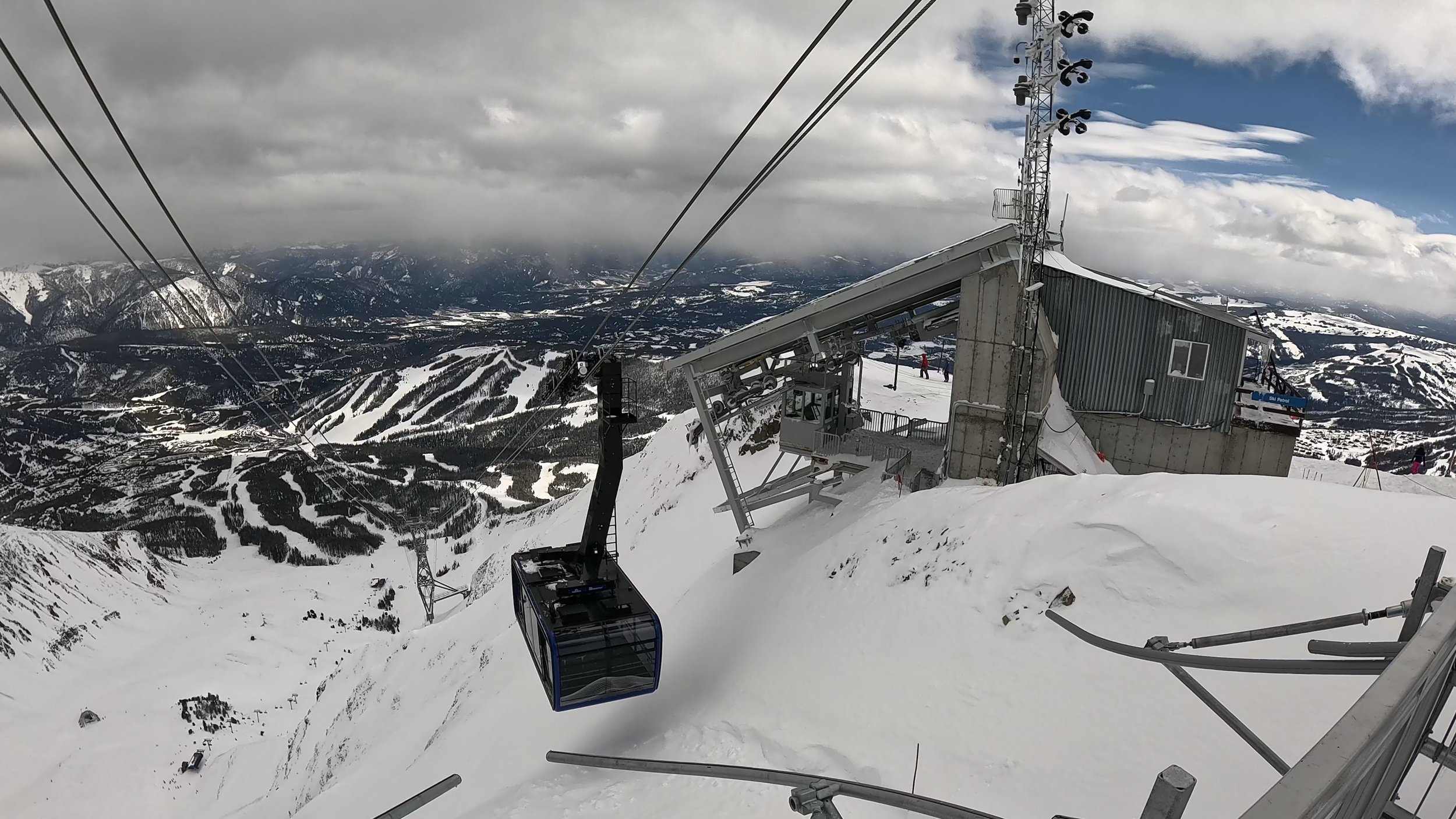Big Sky Eliminates Extra-Cost Tram Charge For Day Ticket Holders
Starting next season, Big Sky lift tickets will include unrestricted access to the Lone Peak Tram for the first time since 2021.
For the 2024-25 season, Big Sky’s extra-cost add-on charge for its Lone Peak Tram will be no more—for select visitors.
Starting next winter, those who buy lift tickets directly from the resort will no longer have to pay extra to access the 75-passenger Lone Peak Tram, which charged anywhere between $10-$50 per ride this season for all but top-of-the-line Gold and Double Black season pass holders. This marks the first season since 2020-21 that Big Sky will include Lone Peak Tram access with its lift ticket products.
However, the Lone Peak Tram per-ride fee is not going away for a significant portion of Big Sky’s clientele. All Ikon, Mountain Collective, and non-Gold and Double Black pass holders will continue to be charged per Lone Peak Tram ride, with pricing unlikely to shift significantly from this year.
2024-25 Big Sky lift tickets are likely to go on sale later this fall, but pricing has not been announced yet. Next year’s Ikon, Mountain Collective, and Big Sky season passes are on sale now.
Our Take
On the surface, Big Sky’s decision to remove the extra-cost tram access for lift ticket purchasers may seem like a step in the right direction to eliminate the “pay to play” structure of today’s per-ride fee. However, this change comes with several caveats, and the resort has left some questions unanswered that may impact the merits of the decision.
First off, as with most other destination ski resorts across the United States, lift tickets are no longer the cheapest way to get access to Big Sky. With 1-day adult tickets that now often go for over $200 per day, the price for such a product is extremely hard to justify for most rational consumers. Most budget-savvy consumers will likely visit Big Sky with an Ikon or Mountain Collective multi-resort pass product; despite their high upfront cost, these passes offer access to multiple resorts and will be much more economical per day for those planning to hit multiple resorts next year. Even those planning to do just one vacation at Big Sky next year will likely want to go for the Ikon Session Pass, which is effectively a flexible day ticket priced 25-50% lower than a regular Big Sky lift ticket.
However, because all of these Ikon and Mountain Collective-branded products are not considered “day tickets”, they will not be exempt from the tram fee next season. This effectively means that consumers who attempt to secure Big Sky access through remotely economical means will still have to pay the same extra cost for the Lone Peak Tram as last year.
In addition, it’s unclear whether Big Sky actually plans to make Lone Peak Tram access cheaper for lift ticket holders, or whether the resort plans to bake the cost directly into the price of the lift ticket. If next year’s lift ticket prices remain consistent with the costs of this year’s rates, day ticket purchasers will in fact pay less for Lone Peak Tram access next year. But if the resort hikes ticket prices by a significant amount, say $40-$50 per day, ticket-purchasing guests will need to ride the Lone Peak Tram multiple times a day to get a better deal than the current setup. Moreover, those who ski or ride for only a few days (assuming one doesn’t plan to visit during a holiday blackout period) may still save more money by buying an Ikon Session Pass, which comes out to $120-$150 per day of Big Sky access, and paying for a few tram add-on rides.
Finally, Big Sky’s decision to give extra privileges to day ticket purchasers over Ikon and Mountain Collective Pass holders is another step in the direction of treating Ikon and Mountain Collective holders as second class to regular lift ticket purchasers. Big Sky is not the only ski resort to give more privileges to day ticket holders than those who visit with multi-resort passes; Alta has charged less for weekend parking for day ticket holders than Ikon and Mountain Collective visitors for years, and several Ikon and Mountain Collective pass partners—Big Sky included—require in-advance reservations to visit that can fill up quickly. The Ikon and Mountain Collective products have arguably resulted in an overflow of demand to the resorts that honor them, and as more and more resorts try to figure out how to control crowds in this pass-dominated world, perhaps we’ll see more restrictions across other resorts in the future.
Ultimately, we’ll have to wait until Big Sky releases 2024-25 lift ticket rates to pass final judgment on this announcement. But for guests who plan their mountain access several months in advance, this strategy change likely means little to the overall cost of access to Montana’s biggest resort.
Considering a ski trip to Big Sky this year? Check out our full Rockies rankings, as well as our comprehensive Big Sky reviews (both with and without tram access). You can also check out our Big Sky review in video form below (please note that it was filmed prior to the new Lone Peak Tram’s installation).


